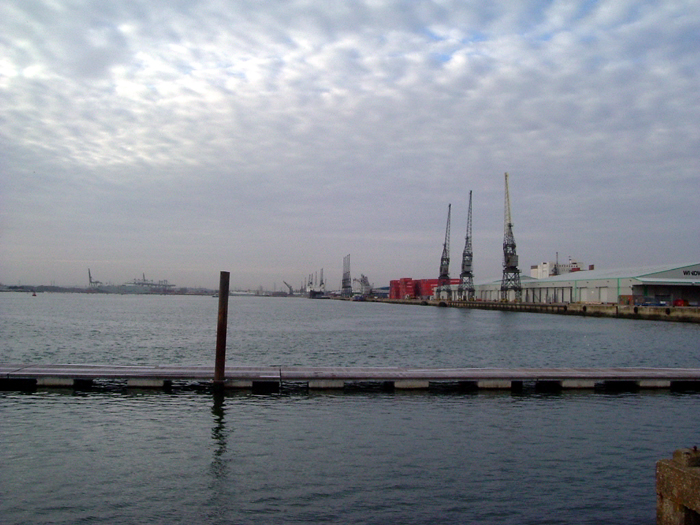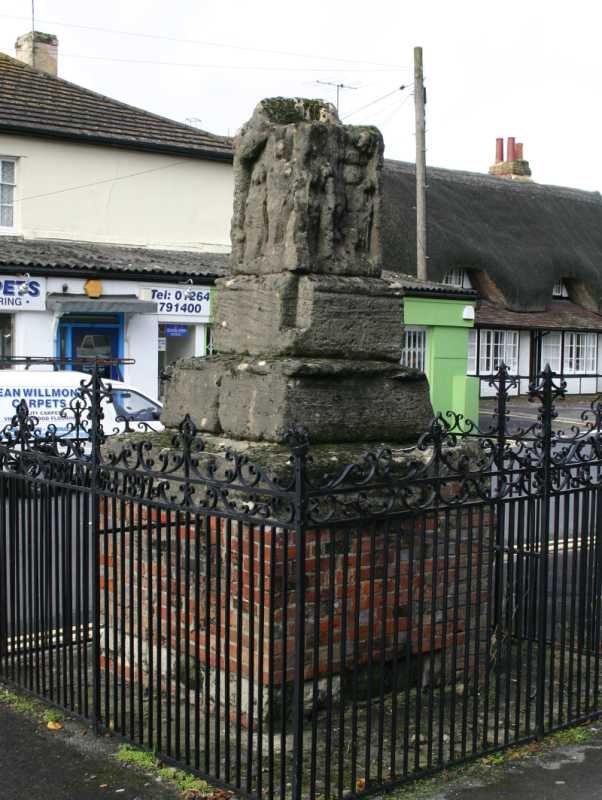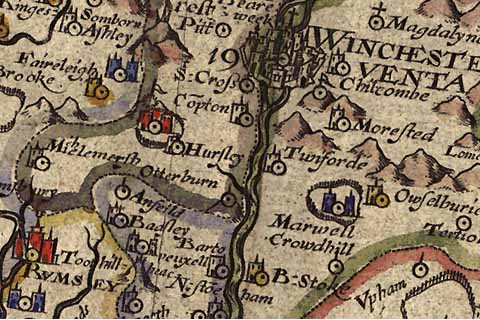|
Hampshire Downs
The Hampshire Downs form a large area of downland in central southern England, mainly in the county of Hampshire but with parts in Berkshire and Wiltshire. They are part of a belt of chalk downland that extends from the South Downs in the southeast, north to the Berkshire and Marlborough Downs, and west to the Dorset Downs. The downs have been designated a National Character Area (NCA 130) by Natural England, the UK Government's advisor on the natural environment. To the north lie the Thames Basin Heaths, to the east the Low Weald (Western Weald), to the south the South Hampshire Lowlands and the South Downs, and, to the west, Salisbury Plain and the West Wiltshire Downs.''NCA 130: Hampshire Downs - Key Facts & Data'' at www.naturalengland.org.uk. Accessed on 3 Apr 2013. [...More Info...] [...Related Items...] OR: [Wikipedia] [Google] [Baidu] |
Hampshire Downland Above Alresford - Geograph
Hampshire (, ; abbreviated to Hants) is a ceremonial and non-metropolitan county in western South East England on the coast of the English Channel. Home to two major English cities on its south coast, Southampton and Portsmouth, Hampshire is the 9th-most populous county in England. The county town of Hampshire is Winchester, located in the north of the county. The county is bordered by Dorset to the south-west, Wiltshire to the north-west, Berkshire to the north, Surrey to the north-east, and West Sussex to the south east. The county is geographically diverse, with upland rising to and mostly south-flowing rivers. There are areas of downland and marsh, and two national parks: the New Forest and part of the South Downs, which together cover 45 per cent of Hampshire. Settled about 14,000 years ago, Hampshire's recorded history dates to Roman Britain, when its chief town was Venta Belgarum (now Winchester). The county was recorded in Domesday Book as divided into 44 hundred ... [...More Info...] [...Related Items...] OR: [Wikipedia] [Google] [Baidu] |
Basingstoke
Basingstoke ( ) is the largest town in the county of Hampshire. It is situated in south-central England and lies across a valley at the source of the River Loddon, at the far western edge of The North Downs. It is located north-east of Southampton, south-west of London, 27 miles (43 km) west of Guildford, south of Reading and north-east of the county town and former capital Winchester. According to the 2016 population estimate, the town had a population of 113,776. It is part of the borough of Basingstoke and Deane and part of the parliamentary constituency of Basingstoke. Basingstoke is an old market town expanded in the mid-1960s, as a result of an agreement between London County Council and Hampshire County Council. It was developed rapidly after the Second World War, along with various other towns in the United Kingdom, in order to accommodate part of the London 'overspill' as perceived under the Greater London Plan in 1944. Basingstoke market was mentioned i ... [...More Info...] [...Related Items...] OR: [Wikipedia] [Google] [Baidu] |
River Itchen, Hampshire
The River Itchen in Hampshire, England, rises to the south of New Alresford and flows to meet Southampton Water below the Itchen Bridge. The Itchen Navigation was constructed in the late 17th and early 18th centuries to enable barges to reach Winchester from Southampton Docks, but ceased to operate in the mid-19th century and is largely abandoned today. The river is one of the world's premier chalk streams for fly fishing, amenable to dry fly or nymphing. The local chalk aquifer has excellent storage and filtration and the river has long been used for drinking water. Watercress thrives in its upper reaches. Much of the river from its source to Swaythling is classified as a biological Site of Special Scientific Interest (SSSI), and a Special Area of Conservation, of which the Hockley Meadows nature reserve is a part. The Itchen estuary is part of the separate Lee-on-The Solent to Itchen Estuary SSSI. Etymology and other name The name is likely from a Brittonic language ... [...More Info...] [...Related Items...] OR: [Wikipedia] [Google] [Baidu] |
River Test
The River Test is a chalk stream in Hampshire in the south of England. It rises at Ashe near Basingstoke and flows southwards for to Southampton Water. Settlements on the Test include the towns of Stockbridge and Romsey. Below the village of Longparish, the river is broadly followed by the Test Way, a long-distance footpath. Much of the Test is a biological Site of Special Scientific Interest. It is part of the Solent and Southampton Water Ramsar site and Special Protection Area. The river is used for fly fishing for trout from its source to its tidal limit. Etymology Recorded forms are Terstan from 877 and 901, Tarstan stream in 1045, Terstein 1234, and Test in 1425. If Common Brittonic, not Old English, all related dictionaries show three suitable words beginning with Tre- and none with extremely rare Ter-. There is precedent to such metathesis: as for the river Tern in the far west, from tren 'strong'. If so it most likely relates to the Welsh ''tres'' (tumult, commotio ... [...More Info...] [...Related Items...] OR: [Wikipedia] [Google] [Baidu] |
Ludgershall, Wiltshire
Ludgershall ( , with a hard g) is a town and civil parish north east of Salisbury, Wiltshire, England. It is on the A342 road between Devizes and Andover. The parish includes Faberstown which is contiguous with Ludgershall, and the hamlet of Biddesden which is to the east on the border with Hampshire. History There is evidence of settlement in the late Bronze Age or early Iron Age at Windmill Down on the western edge of the parish. The ''Domesday Book'' of 1086 recorded small settlements at Ludgershall and Biddesden. The entry for ''Litlegarsele'' reads: "Edward of Salisbury holds Ludgershall. Alfward held it before 1066; it paid tax for one hide (about 24 acres). Land for 3 ploughs. In Lordship 2 ploughs, 3 slaves; 8 Cottagers with 1 plough. Pasture 3 furlongs long and 1 furlong wide; woodland ½ league long and 2 furlongs wide." The value was 100 shillings. The name "Litlegarsele" may come from "lytel", small and "garsheath", a grassy place, thus a "small grazing area" ... [...More Info...] [...Related Items...] OR: [Wikipedia] [Google] [Baidu] |
Michelmersh
Michelmersh is a small, scattered village in Hampshire, England some three miles () north of Romsey. It forms a civil parish with Timsbury, Hampshire, Timsbury that forms part of the Test Valley district. The Monarch's Way long-distance footpath crosses the parish, passing through the churchyard of the 12th century St Mary's Church. The Georgian former rectory, Michelmersh Court, is Grade II* listed and was for many years the home of David Frost, Sir David and Lady Carina Frost. The parish is located to the east of the River Test on the northern edge of the Hampshire Basin, with chalk in the north.British Geological Survey, 2002, ''England & Wales Sheet 299: Winchester'', 1:50,000 Geology Series, Keyworth, Nottingham:British Geological Survey, To the south and east of the village this is overlain by Palaeocene sands and clays of the Lambeth Group. At the southern are younger deposits of Eocene age, sloping from a ridge of the Nursling sands into a valley of London Clay. It has ... [...More Info...] [...Related Items...] OR: [Wikipedia] [Google] [Baidu] |
Otterbourne
Otterbourne is a village in Hampshire, England. It is located approximately south of Winchester and north of Southampton. At the 2011 census, its population was 1,539, and there were 626 dwellings. There are three public houses in the village: the ''White Horse Inn'', the ''Otter'', and the ''Old Forge''. There is also a school, a post office and village shop. Before the 21st century, the post office and village shop were located opposite Cranbourne Drive at the bottom of Otterbourne Hill. However, at the end of the 1990s, the car garage at the centre of the village was rebuilt to include a petrol station and convenience store. Shortly after the opening of the convenience store, the village shop closed; the store then expanded to include a post office, taking over all previous functions of the old village shop. Until late 2007 the convenience store was running under a SPAR franchise. It was then taken over by Budgens. It has subsequently been taken over by Nisa Local convenie ... [...More Info...] [...Related Items...] OR: [Wikipedia] [Google] [Baidu] |
Twyford, Hampshire
Twyford is a village and civil parish in Hampshire, England, approximately south of Winchester and near the M3 motorway and Twyford Down. In 2001, the population of the parish was 1,456. The village and parish are on the left bank of the Itchen, which passes through nearby watermeadows, and has been important economically for its residents. History The name "Twyford" means "two fords" (Old English 'twifyrd'), which cross the River Itchen and was noted from as early as 963, being also mentioned in the 1086 ''Domesday Book'' as 'Tuiforde', belonging to the Bishop of Winchester and containing a church and six watermills. In Thomas Moule's ''English Counties'' 1837 edition, Twyford is referred to as: "on the river Itchin ic 3 miles S. from the City of Winchester, contains 169 houses and 1048 inhabitants." Amenities Twyford includes a village school, St. Mary's Primary School, St Mary's Church, a travel agency, a doctor's surgery and pharmacy, a grocer's shop and Post Offic ... [...More Info...] [...Related Items...] OR: [Wikipedia] [Google] [Baidu] |
Winchester
Winchester is a City status in the United Kingdom, cathedral city in Hampshire, England. The city lies at the heart of the wider City of Winchester, a local government Districts of England, district, at the western end of the South Downs National Park, on the River Itchen, Hampshire, River Itchen. It is south-west of London and from Southampton, its nearest city. At the 2011 census, Winchester had a population of 45,184. The wider City of Winchester district, which includes towns such as New Alresford, Alresford and Bishop's Waltham, has a population of 116,595. Winchester is the county town of Hampshire and contains the head offices of Hampshire County Council. Winchester developed from the Roman Britain, Roman town of Venta Belgarum, which in turn developed from an Iron Age oppidum. Winchester was one of the most important cities in England until the Norman conquest of England, Norman conquest in the eleventh century. It has since become one of the most expensive and afflue ... [...More Info...] [...Related Items...] OR: [Wikipedia] [Google] [Baidu] |
East Hampshire Hangers
The East Hampshire Hangers are located in the English county of Hampshire and form a line of hills with steep scarps that marks the eastern edge of the Hampshire Downs and its boundary with the Western Weald, an area of rolling countryside east of Petersfield and Liss. The Hangers run from the area of Farnham to Petersfield, before swinging eastwards to take in the north-facing scarp of the South Downs. The main settlements of the area are the villages of Selborne, Hawkley and East Worldham. The name is derived from the "hangers": long, narrow remnants of ancient woodland clinging to the steep scarp slopes. Examples include Milking Hanger, Warner's Hanger and Wick Hill Hanger. The area is an historic landscape and has been designated as a Special Area of Conservation covering around . [...More Info...] [...Related Items...] OR: [Wikipedia] [Google] [Baidu] |
Weald
The Weald () is an area of South East England between the parallel chalk escarpments of the North and the South Downs. It crosses the counties of Hampshire, Surrey, Sussex and Kent. It has three separate parts: the sandstone "High Weald" in the centre; the clay "Low Weald" periphery; and the Greensand Ridge, which stretches around the north and west of the Weald and includes its highest points. The Weald once was covered with forest, and its name, Old English in origin, signifies "woodland". The term is still used today, as scattered farms and villages sometimes refer to the Weald in their names. Etymology The name "Weald" is derived from the Old English ', meaning "forest" (cognate of German ''Wald'', but unrelated to English "wood", which has a different origin). This comes from a Germanic root of the same meaning, and ultimately from Indo-European. ''Weald'' is specifically a West Saxon form; '' wold'' is the Anglian form of the word. The Middle English form of the word is ... [...More Info...] [...Related Items...] OR: [Wikipedia] [Google] [Baidu] |
Petersfield
Petersfield is a market town and civil parish in the East Hampshire district of Hampshire, England. It is north of Portsmouth. The town has its own railway station on the Portsmouth Direct line, the mainline rail link connecting Portsmouth and London. Situated below the northern slopes of the South Downs, Petersfield lies wholly within the South Downs National Park. The town is on the crossroads of well-used north–south (formerly the A3 road which now bypasses the town) and east–west routes (today the A272 road) and it grew as a coach stop on the Portsmouth to London route. Petersfield is twinned with Barentin in France, and Warendorf in Germany. History Petersfield Heath's burial mounds may be up to 4,000 years old; their distribution is mainly to the east and south east of the Heath. These are considered to be one of the more important lowland barrow groups in this country. The barrows indicate that the area of the Heath was occupied by people who may have come to re ... [...More Info...] [...Related Items...] OR: [Wikipedia] [Google] [Baidu] |







